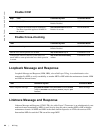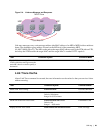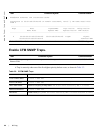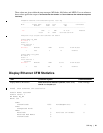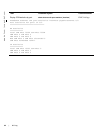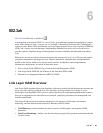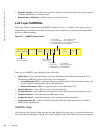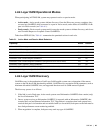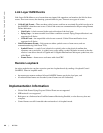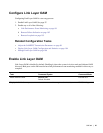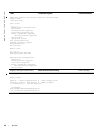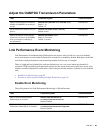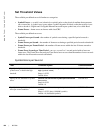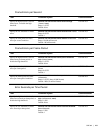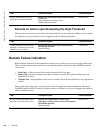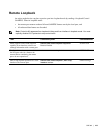96 | 802.3ah
www.dell.com | support.dell.com
Link Layer OAM Events
Link Layer OAM defines a set of events that may impact link operation, and monitors the link for those
events. If an event occurs, the detecting system notifies its peer. There are two types of events:
• Critical Link Events—There are three critical events; each has an associated flag which can be set in
the OAMPDU when the event occurs. Critical link events are communicated to the peer using Remote
Failure Indication.
• Link Fault—A fault occurred in the receive direction of the local peer.
• Dying Gasp—An unrecoverable local failure condition occurred. Dying Gasp notification is not
supported on S-Series.
• Critical Event—An unspecified critical event occurred. Critical Event notification is not
supported on S-Series.
• Link Performance Events—Link events are either symbol errors or frame errors, and are
communicated using Link Event TLVs.
• Symbol Errors—a symbol is an (electrical or optical) pulse on the physical medium that
represents one or more bits. A symbol error occurs when a symbol degrades in transit so that the
receiver is not able to decode it. Gigabit and 10-Gigabit Ethernet have and expect symbol rate, also
called Baud.
• Frame Errors—frame errors are frames with a bad CRC.
Remote Loopback
An active-mode device can place a passive peer into loopback mode by sending a Loopback Control
OAMPDU. When in loopback mode:
• the remote peer returns unaltered all non-OAMPDU frames sent by the local peer, and
• all outbound data frames are discarded (control frames are still forwarded).
Implementation Information
• Critical Link Events Dying Gasp and Critical Event are not supported.
• MIB retrieval is not supported.
• Both peers on a link must have Link Performance Monitoring Enabled, or else discovery does not
complete.
• Control frames are still forwarded when an interface is in loopback mode.



